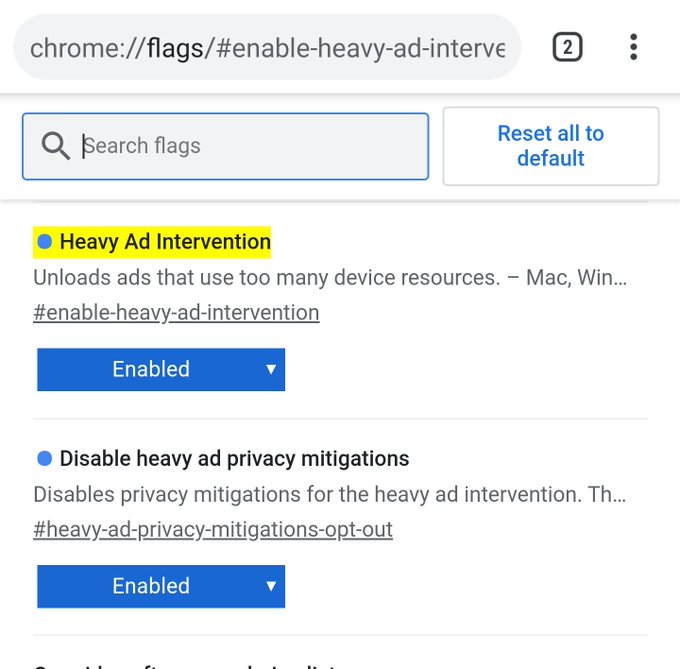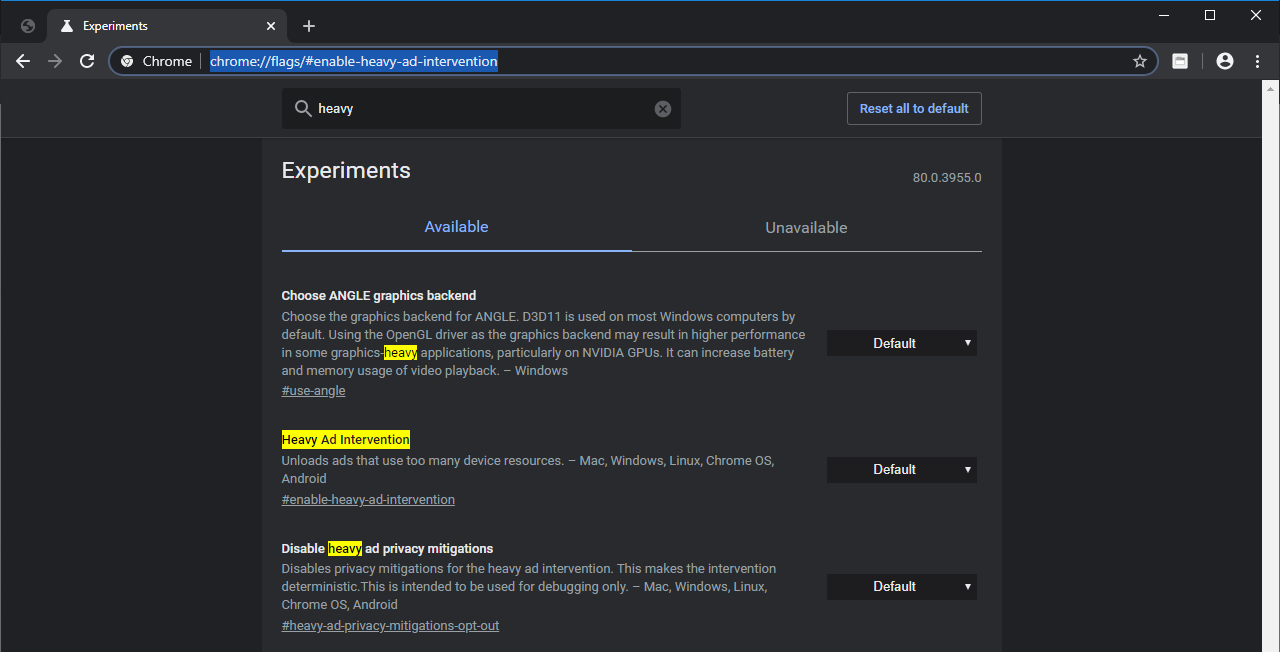- Disable Heavy Ad Intervention
- Heavy Ad Intervention Edge
- #enable-heavy-ad-intervention
- Google Heavy Ad Intervention
Google – Chrome – Configuration – “Heavy Ad Intervention” June 3, 2020 June 3, 2020 Daniel Adeniji 9to5Google, Ads ( Google - Chrome ), Chrome ( Google ), Google Background. The 'heavy ad intervention' system here is meant to reduce Chrome's network and CPU footprint. According to Google software engineer John Delaney in a post on Google Groups: 'As this is a significant intervention, we intend to roll it out gradually.
Heavy Ad Intervention Intrusive adverts are both the bane of the Internet but also, unfortunately, its life force. By default, Chrome does a so-so job of blocking ads for you (unless they’re Google ads, in which case it’s open season!), but you can enable this flag to bolster Chrome’s ad-blocking defences. Oct 31, 2019 Heavy Ad Intervention lets you disable or enable the ad-blocking feature while Disable heavy ad privacy mitigations disables the ad-blocker's built-in privacy protections (most people should leave. Chrome’s heavy ads intervention is coming into effect. In order to improve user’s experience Google's developers opt to optimize ads that use too many resources, including CPU, bandwidth, and memory. TwinRed’s team is already working on a solution for the optimization of creatives: interstitials, iframe banners, and pre-rolls.
Google is rolling out a new feature that allows the Google Chrome web browser to automatically unload web ads that use a disproportionate amount of system resources as part of an effort to reduce the browser's network and CPU footprint.
These resource-intensive heavy ads are known for ruining users' web browsing experience by making web pages load slower than normal, by draining their devices' battery, and by consuming mobile data for users without unlimited plans.

'As this is a significant intervention, we intend to roll it out gradually throughout the month of September in Chrome M85,' Google software engineer John Delaney said earlier this month.
'We will monitor any breakage or unintended effects of the intervention as we ramp up.'
What ads will be unloaded
Google is using a thresholds-based system to spot heavy ads, a system that will automatically mark them as causing performance issues if users do not interact with them and if they meet these criteria:
- Uses the main thread for more than 60 seconds in total
- Uses the main thread for more than 15 seconds in any 30-second window
- Uses more than 4 megabytes of network bandwidth

As Chrome Product Manager Marshall Vale said in May, although only 0.3% of all ads displayed online will exceed these very specific thresholds, they are also behind 26% of all the network data and 28% of all CPU resources used by online ads.
Ad behaviors discouraged by Chrome's new anti-heavy ad intervention system include mining cryptocurrency in-browser, loading large and poorly compressed images, and loading large video files before a user gesture.
The heavy-ads blocking will also automatically unload ads that perform resource-intensive JavaScript operations including CPU timing attacks and video decoding.
'In order to save our users’ batteries and data plans, and provide them with a good experience on the web, Chrome will limit the resources a display ad can use before the user interacts with the ad,' Vale added.
'When an ad reaches its limit, the ad's frame will navigate to an error page, informing the user that the ad has used too many resources.'
Test heavy ad blocking now
You can test the heavy ads blocking feature on some sample content available on heavy-ads.glitch.me and you can also use it to load arbitrary URLs to test custom sites.
Google started working on this feature in July 2019 as part of a larger effort trying to steer online ads into becoming friendlier, with Google Chrome blocking a whole range of abusive or misleading advertisements starting with version 71 that was released in December 2018.

Disable Heavy Ad Intervention
To filter harmful and resource-heavy web ads, Chrome follows the Better Ads Standards to determine if a website is showcasing potentially abusive ads.
Ads previously included in Google Chrome's blocklist are those that promote and distribute malware, feature hidden click areas, show fake messages and alerts, display fake mouse pointers, abuse non-interactive redirects, and those that generally present misleading behavior.
Related Articles:
Chrome will unload ad iframes that use an egregious amount of CPU or network bandwidth. An ad will be subject to unload if it has not received a user gesture and: * Used the main thread for more than 60 seconds total * Used the main thread for more than 15 seconds in any 30 second window (50% utilization over 30 seconds) * Used more than 4 megabytes of network bandwidth to load resources
Motivation
A small fraction of ads on the web use an egregious amount of system resources. These poorly performant ads (whether intentional or not) harm the user’s browsing experience by making pages slow, draining device battery, and consuming mobile data (for those without unlimited plans).
Demo
Documentation
Specification
Status in Chromium
Blink
Browser Intervention (tracking bug) in:
Heavy Ad Intervention Edge
- Chrome for desktop release 85
- Chrome for Android release 85
Consensus & Standardization

- No signal
- No signal
- No signal
- No signals
Owners
#enable-heavy-ad-intervention
Intent to Prototype url
Intent to Prototype threadGoogle Heavy Ad Intervention
Last updated on 2021-02-01
